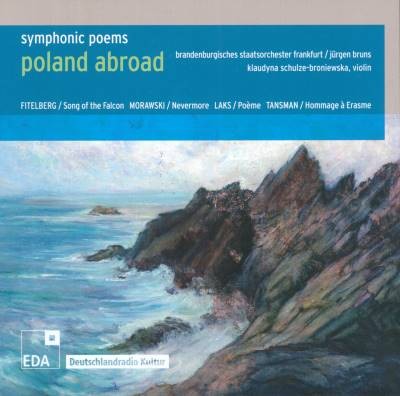2.picc.2.corA.2.bcl.2.dbn-4.3.3.1-timp(3).perc-harp-strings
Abbreviations (PDF)
Bote & Bock
The Poème for violin and orchestra from 1954 belongs to the few works that were created before the 1960s when Laks was once again able to follow up on his pre-war successes. With this work, written without a commission and not to experience a performance during the composer’s lifetime, Laks places himself in the tradition of the one-movement “tone poem” established by Ysaye for one or more solo string instruments and orchestra. Intimate in expression and not bound by the formal conventions of the multi-movement instrumental concerto, virtuosity sees itself entirely in the service of the poetic message . Within a confined space, an entire cosmos of emotions is traversed, from lyrical soulfulness to defiant rebellion, from dance-like elegance to mild transfiguration. It seems as if Laks wanted to reassure himself of all of the facets of his compositional expertise in his first large-scale score attempted after the war. Over a delicate tapestry of sound, the solo violin raises its song, which, primed by a simple harmonic pendulum motion, swings out further and further, and in multiple attempts leads into a cadenza, which in its orchestral opulence seems to carry us off into Szymanowski’s world of sound. An agitated new section is initiated by an ascending figure in the low strings, which is answered by striking chordal sequences. After a dramatic intensification, we find our way back to the meditative calmness of the beginning. In the following Allegro moderato ma con fuoco, the ascending bass line, with its contrary response, emerges as the countersubject (counter theme) of the opening vocal line, which must now assert itself in a complex contrapuntal mesh. Laks sets up this central middle section as a synthesis of fugue and exposition, in the course of which the thematic treatment is increasingly limited to the baroque-style counter theme. The following scherzo-like section transitions smoothly into a “Ravelesque” Tempo di Mazurka, which in turn leads to an entirely new mutation of the counter theme: the characteristic four-tone motive, which thematically dominates the previous section – two chromatic semitones followed by a falling major third – becomes, extended by an upbeat, the theme of a Marcia funebre, a funeral march. The work ends cyclically with a return to the swaying tonal splendour of the initial Lento assai. The poetic idea behind the “journey” of this musical material is obvious. With this work, Laks enrols himself in the Polish tradition of symphonic poems and symphonies, whose programme reflects the tragic fate of the Polish nation, which experienced the cruellest test of its history during the German occupation of 1939–1945.
Frank Harders-Wuthenow

Klaudyna Schulze-Broniewska / Brandenburgisches Staatsorchester Frankfurt / Jürgen Bruns
Edition Abseits EDA 27 („Poland Abroad“)
